Today Current Affairs: 13th January 2022 for UPSC IAS exams, State PSC exams, SSC CGL, State SSC, RRB, Railways, Banking Exam & IBPS, etc
Table of Contents
Turkmenistan’s Gateway To Hell:
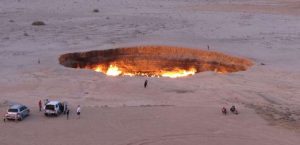
Turkmenistan’s President Gurbanguly Berdymukhamedov recently ordered officials to find a method of finally extinguishing the ‘Gateway to Hell’ in the country.
- Turkmenistan’s Gateway to hell, also known as The Darvaza Crater, is 225 feet wide and 99 feet deep. It has a diameter of 70 metres, across an area of 5.5 square metres.
- It is a natural gas field collapsed into a cavern near Darvaza in Turkmenistan.
- It is the raging flames, burning for five decades in a large natural gas crater.
- It is believed that, in 1971, a simple miscalculation by Soviet scientists led to the creation of this crater.
- The Soviet scientists had underestimated the amount of fuel laying below. Their boring equipment drilled through an underground cavern.
- Because of this, a deep sinkhole was created.
- After the gas driller fell into the pit, scientists were concerned that the crater would release noxious gases.
- Toxic methane gas had already started leaking into the atmosphere.
- Thus, in order to stop the methane from reaching neighbouring areas and causing damage to the environment & living organisms, scientists decided to set the crater ablaze.
What Is National Supercomputing Mission (NSM)?
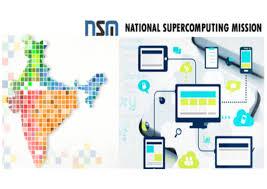
Under the National Super-Computer Mission (NSM), four new Supercomputers have been installed since July 2021 at IIT-Hyderabad, NABI- Mohali, CDAC-Bengaluru and IIT Kanpur.
- NSM provides access to High-Performance Computing (HPC) facilities to around 75 institutions and more than thousands of active researchers, academicians working through Nation Knowledge Network (NKN).
- National Supercomputing Mission (NSM) is being implemented and steered jointly by the Department of Science and Technology (DST) and Department of Electronics and Information Technology (DeitY).
- Implemented by the Centre for Development of Advanced Computing (C-DAC), Pune and the Indian Institute of Science (IISc), Bengaluru.
- The Mission envisages empowering national academic and R&D institutions spread over the country by installing a vast supercomputing grid comprising of more than 70 high-performance computing facilities.
- These supercomputers will also be networked on the National Supercomputing grid over the National Knowledge Network (NKN).
- The NKN is another programme of the government which connects academic institutions and R&D labs over a high speed network.
- The Mission includes development of highly professional High Performance Computing (HPC) aware human resource for meeting challenges of development of these applications.
What Is The OSIRIS-REx Mission?

OSIRIS-REx is bringing back an asteroid sample. It will arrive home in 2023, ejecting a capsule full of samples that may help eager scientists decipher the origin of Earth’s water and life.
- The debris NASA’s asteroid-touching spacecraft collected could help us learn about the origins of our solar system.
- On October 20th, 2021, NASA’s OSIRIS-REx spacecraft briefly touched asteroid Bennu, from where it is meant to collect samples of dust and pebbles and deliver them back to Earth in 2023.
- OSIRIS-Rex stands for Origins, Spectral Interpretation, Resource Identification, Security-Regolith Explorer.
- This is NASA’s first mission meant to return a sample from the ancient asteroid.
- Launched in 2016, it reached its target in 2018.
- The departure window for the mission will open up in 2021, after which it will take over two years to reach back to Earth.
Asteroid Bennu:
- The asteroid was discovered by a team from the NASA-funded Lincoln Near-Earth Asteroid Research team in 1999.
- Scientists believe that it was formed in the first 10 million years of the solar system’s formation, implying that it is roughly 4.5 billion years old.
- Because of Bennu’s age, it is likely to contain material that contains molecules that were present when life first formed on Earth, where life forms are based on carbon atom chains.
- Because of its high carbon content, the asteroid reflects about four per cent of the light that hits it, which is very low when compared with a planet like Venus, which reflects about 65 per cent of the light that hits it. Earth reflects about 30 per cent.
- It classified as a Near Earth Object (NEO), might strike the Earth in the next century, between the years 2175 and 2199.
Academic Bank Of Credit:
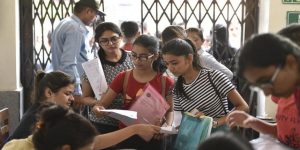
The government has brought the IITs, IIMs and other Institutions of National Importance (INIs) under the Academic Bank of Credit (ABC) framework, which allows students to pursue up to 50 per cent of a course from institutions other than the one with which they are enrolled.
- Academic Bank of Credit (ABC) is proposed under the National Education Policy (NEP) 2020.
- Academic Bank of Credit (ABC) Set-up by the University Grants Commission (UGC).
- Under the ABC, students will be given multiple entry and exit options.
- This enables students to leave a degree or course and get a corresponding certification and rejoin studies after a certain time and be able to start from where they had left.
- It will also provide students with the flexibility to move between institutes while pursuing one degree or leave a course.
- ABC will keep records of the academic credits of a student. It will not accept any credit course document directly from the students for any course they might be pursuing, but only from higher education institutes, who will have to make deposits in students’ accounts.
- ABC will help in credit verification, credit accumulation, credit transfer and redemption of students, and promotion of the students.
National Commission For Protection Of Child Rights (NCPCR):

The National Commission for Protection of Child Rights (NCPCR) has asked the West Bengal chief secretary to get all children care institutions (CCIs) registered under the Juvenile Justice Act 2015.
- Citing that it was mandatory for all CCIs to comply with the JJ Act, the NCPCR has sought an action taken report from the state within 10 days.
About NCPCR:
- Set up in March 2007 under the Commission for Protection of Child Rights Act, 2005.
- It works under the administrative control of the Ministry of Women & Child Development.
- The Child is defined as a person in the 0 to 18 years age group.
- The Commission’s Mandate is to ensure that all Laws, Policies, Programmes, and Administrative Mechanisms are in consonance with the Child Rights perspective as enshrined in the Constitution of India and also the UN Convention on the Rights of the Child.
- This commission has a chairperson and six members of which at least two should be women.
- All of them are appointed by Central Government for three years.
- The maximum age to serve in commission is 65 years for Chairman and 60 years for members.
- As per the Section 27(1) of Juvenile Justice (Care and Protection of Children) Act, 2015 (JJ Act), Child Welfare Committees (CWCs) are to be constituted by State Government for every district, for exercising the powers and to discharge the duties conferred on such Committees in relation to children in need of care and protection under JJ Act, 2015.
- The Committee shall consist of a Chairperson, and four other members as the State Government may think fit to appoint, of whom atleast one shall be a woman and another, an expert on the matters concerning children.
African Swine Fever:
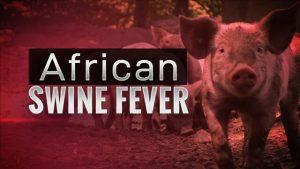
Thailand has detected African Swine Fever in a surface swab sample collected at a slaughterhouse.
- It is a highly contagious and fatal animal disease that infects and leads to an acute form of hemorrhagic fever in domestic and wild pigs.
- Other manifestations of the disease include high fever, depression, anorexia, loss of appetite, hemorrhages in the skin, vomiting and diarrhoea among others.
- It was first detected in Africa in the 1920s.
- Historically, outbreaks have been reported in Africa and parts of Europe, South America, and the Caribbean.
- However, more recently (since 2007), the disease has been reported in multiple countries across Africa, Asia and Europe, in both domestic and wild pigs.
- In 2021, cases were also detected in India.
- The mortality is close to 100% and since the fever has no cure, the only way to stop its spread is by culling the animals.
- ASF is not a threat to human beings since it only spreads from animals to other animals.
- ASF is a disease listed in the World Organisation for Animal Health (OIE) Terrestrial Animal Health Code and thus, reported to the OIE.
Classical Swine Fever:
- CSF, also known as hog cholera, is an important disease of pigs.
- It is one of the most economically-damaging pandemic viral diseases of pigs in the world.
- It is caused by a virus of the genus Pestivirus of the family Flaviviridae, which is closely related to the viruses that cause bovine viral diarrhoea in cattle.
- Mortality is 100%.
- Recently, the ICAR-IVRI developed a Cell Culture CSF Vaccine (live attenuated) using the Lapinized Vaccine Virus from foreign strain.
- The new vaccine has been found to induce protective immunity from day 14 of the Vaccination till 18 Months.
Vehicular Emissions In India:
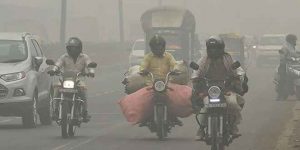
The annual car sales in India are projected to increase from the current 3.5 million to about 10.5 million — a three times increase — by 2030, which will increase exposure to vehicular exhaust emissions.
- India is the fifth-largest global car manufacturer with one of the highest compound annual growth rates (10%) of vehicle registration as of 2019.
- Vehicular emission is a major cause of air pollution in urban areas.
- Typically, vehicular emission contributes 20-30% of Particulate Matter (PM) 2.5 at the breathing level of air quality.
PM2.5 refers to particles that have a diameter less than 2.5 micrometres (more than 100 times thinner than a human hair) and remain suspended for longer. - According to studies, vehicles annually contribute about 290 gigagrams (Gg) of PM2.5.
- At the same time, around 8% of total Greenhouse Gas (GHG) Emissions in India are from the transport sector, and in Delhi, it exceeds 30%.
Vehicular Emissions (World):
- The transport sector accounts for a quarter of total emissions, out of which road transport accounts for three-quarters of transport emissions (and 15% of total global CO2 emissions).
- Passenger vehicles are the largest chunk of this, releasing about 45% of CO2.
- If the conditions prevail, annual GHG emissions in 2050 will be 90% higher than those of 2020.
Protecting Vulnerable Witnesses: SC
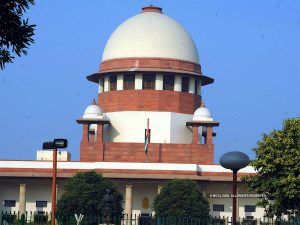
The Supreme Court (SC) expanded the meaning of vulnerable witnesses to also include among others sexual assault victims, those with mental illness and people with speech or hearing impairment.
- The SC referred to a verdict of 1996 in which it had passed similar directions, then in 2004 and in 2017, when it had asked all the High Courts of the country to adopt the guidelines prepared by the Delhi High Court in 2017 for vulnerable
- Vulnerable witnesses will not be limited to mean only child witnesses.
- It will also include :
- Age-neutral victims of sexual assault.
- Gender-neutral victims of sexual assault, under section 377 IPC (unnatural offences).
- Witnesses suffering from mental illness as defined in Mental Healthcare Act, 2017.
- Witnesses with threat perception and any speech or hearing impaired individual or person suffering from any other disability.
- Vulnerable Witness Deposition Centre (VWDC): The SC directed that all High Court’s (HC) adopt and notify a Vulnerable Witness Deposition Centre (VWDC) scheme within a period of two months.
- VWDC will provide a safe and barrier-free environment for recording the evidence of vulnerable witnesses.
- The SC asked HC’s to ensure that there is one VWDC in each district.
- These VDWC should be established in close proximity to Alternate Dispute Resolution (ADR) centres.
- The SC also pointed to the importance of conducting training programs to manage VWDC and sensitising all stakeholders including members of the bar, bench and staff.
- The SC urged former Chief Justice of Jammu and Kashmir HC Justice Gita Mittal to act as Chairperson of a committee for designing and implementing an All India VWDC training program.
- The SC also directed the Chairperson of the committee to engage with National and State Legal Services Authorities to provide an effective interface for schemes of training.
- It also asked the Union Ministry of Women and Child Development to designate a nodal officer for coordinating logistical support to the Chairperson.
India- South Korea Trade Talks:

Minister for Trade of South Korea, Yeo Han-Koo met with Commerce and Industry Minister Piyush Goyal in New Delhi.
- Both the Ministers held wide-ranging discussions covering the whole gamut of Bilateral Trade and Investment related aspects.
- The Ministers agreed to impart fresh momentum to the discussions on Comprehensive Economic Partnership Agreement up-gradation negotiations.
- India and Korea aim to achieve the trade target of 50 Billion dollars before 2030.
- They agreed to address difficulties expressed by industry from both sides and instructed their respective negotiating teams to meet on a regular basis in order to conclude the CEPA up-gradation negotiations as soon as possible.
- The Ministers agreed to boost bilateral trade between India and Korea to achieve growth in a fair and balanced manner to the mutual advantage of both sides.
Sea To Sea Variant Of BrahMos Supersonic Cruise missile:

India successfully tested advanced sea to sea variant of BrahMos Supersonic Cruise missile from INS Visakhapatnam.
- BrahMos, deployed by the Navy on its warships first in 2005, has the capability to hit sea-based targets beyond radar horizon.
- The naval variant was originally tested in October and December 2020 from the Navy’s indigenously-built stealth destroyer INS Chennai and Rajput-class destroyer INS Ranvijay, respectively.
- This version of the missile has been designed to launch either in a vertical or a horizontal mode from moving/stationary assets to target both land and sea targets.
- The missiles, fired at a speed of 2.8 Mach or nearly three times the speed of sound, significantly increase the capability of the ships in engaging long-range targets.
- BrahMos missiles are designed and developed by BrahMos Aerospace, a joint venture company set up by Defence Research and Development Organisation (DRDO) and Mashinostroyenia of Russia.
The First Colombo Security Conclave:
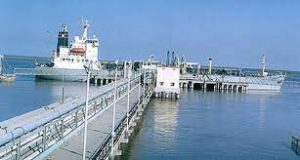
The first Colombo Security Conclave Virtual Workshop on “Developing Regional Cyber Security Capabilities on Defensive operations, Deep/Dark Web handling and Digital Forensics” was hosted.
- It was hosted by the National Security Council Secretariat (NSCS), Government of India in association with National Forensics Science University, Gandhinagar (Gujarat) and the Secretariat of the Colombo Security Conclave, over two days on 10-11 January 2022.
- Delegates from Member and Observer States of the of Colombo Security Conclave (CSC) including Sri Lanka, Maldives, India, Mauritius, Seychelles, and Bangladesh participated in the workshop.
- At the 5th Deputy NSA Level Meeting of the Colombo Security Conclave held on 04 August 2021, Members and Observer States had agreed on four pillars of cooperation including
- Maritime Safety and Security,
- Terrorism and Radicalization,
- Trafficking and Organized Crime and Cyber Security and
- Protection of Critical Infrastructure.
- Participants agreed to identify key deliverables and continue to work on the way forward for cooperation on cyber security under the Colombo Security Conclave.
Transgender Prisons:

The Ministry of Home Affairs (MHA) has written to all States to ensure separate accommodation for transgender persons in prisons.
- It also advised the States and the Union Territories that the prison admission register may be suitably revised to include “transgender” as a category other than male and female gender.
- It also asked that similar provision may be made in the Prison Management System in maintaining electronic records.
- The government enacted the Transgender Persons (Protection of Rights) Act in 2019 and the advisory was sent to ensure their safety and to protect them against any form of exploitation in the context of prisons and correctional facilities.
- However, while making provision for a separate enclosure for transgender prisoners, due care may be taken by the prison authorities that this may not result in their complete isolation or propagate social stigma among such prisoners.
- There should also be adequate preservation of right to privacy and dignity in regard to separate toilets for transmen and transwomen as well as shower facilities.
- It said the physical search of a transgender person may be conducted by a person of their preferred gender or by a trained medical professional or a paramedic.
- The person conducting the search must ensure the safety, privacy and dignity of the person being searched. At the stage where the search procedure requires stripping, it must be done in a private room or partition.




